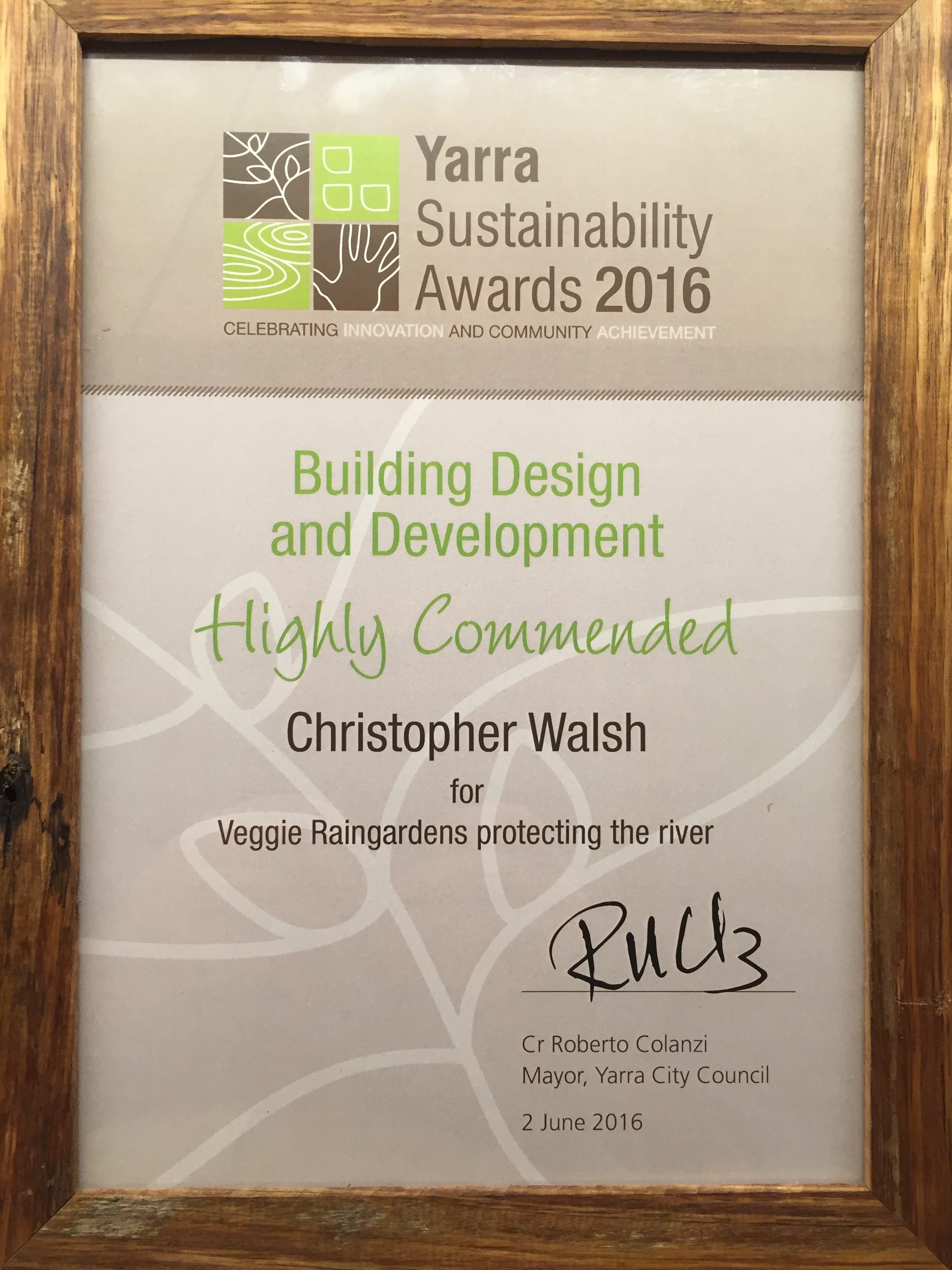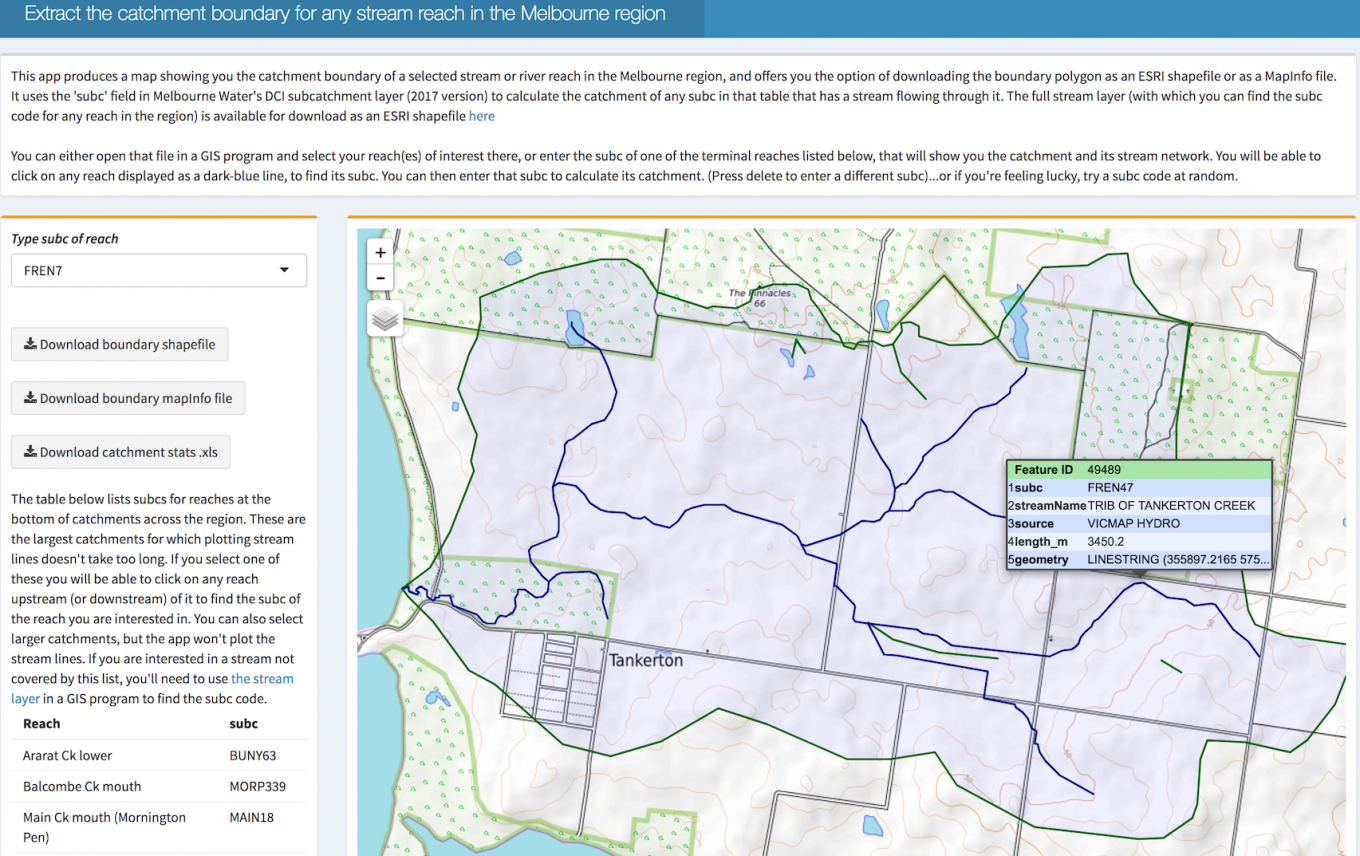No flooding here…
At the risk of sounding like a cracked record, I note that once again, summer urban flooding makes the newspaper, when not a drop of runoff has left our property during or after this afternoon’s intense downpour. Our tank is now a bit over half-full, and the two raingardens remain close…
A little rain, a lot of disturbance

In past posts about my rain-garden system, I’ve tended to focus on the water saving, food production and flood-mitigation benefits of systems like ours. But my main motivation and interest has always been how such systems can make our local rivers and streams healthier. Today, with a (very) little rain I witnessed,…
Straight to the pool room

Many thanks to Yarra City Council for their commendation of our raingarden, and for a great awards night at the Collingwood Town Hall. Awards went to some amazing, inspiring people; I’m grateful there was room for recognition of our little idea. Here’s hoping it’s another step towards broader adoption of new…
City of Yarra Sustainability awards
If you think my raingarden diary is a useful resource, please consider voting for my entry in the City of Yarra Sustainability Awards peoples’ choice vote. They have listed it as an entry from Melbourne University, but I entered as a private resident of the City of Yarra (it is listed…
My raingarden diary in print
My raingarden diary features in the latest issue of ReNew Magazine. Ironically, this issue (No. 135) is subtitled ‘The Water Saving Special”, while the biggest challenge for our system is to use enough of the large volume of water that our house produces. Even with the gardens growing amazingly over…
A sad, avoidable, predictable day
Of course they are running the line that the 50 gigalitres that the government have ordered from our desalination plant next summer is drawing on our insurance policy (that is costing us something like $600 million dollars a year before they turn it on, and substantially more for the water delivered, while…
Reliability Schmeliability
One of the most common arguments I hear from a subset of urban water managers who don’t like rainwater tanks is that tanks are too unreliable to be considered a viable urban water source. So, perhaps now, a week after our tank lay empty for 8 days, would be a good…
The LUMaR tool
Walsh and Webb (2013) developed a new index of stream condition, LUMaR*, based on their distribution models of 60 families of macroinvertebrates across the Melbourne region. The models allow prediction of the effects of loss (or gain) of forest cover and of conventionally drained urbanization on the occurrence of the 60 families….
The public good in using more (tank) water
In today’s update of my raingarden diary, I report on deliberately increasing our demand for water from our rainwater tank (by disabling the half-flush option on our toilets). Our increase in demand from our tank by 20–25 L a day might seem to go against everything our water authorities tell…




